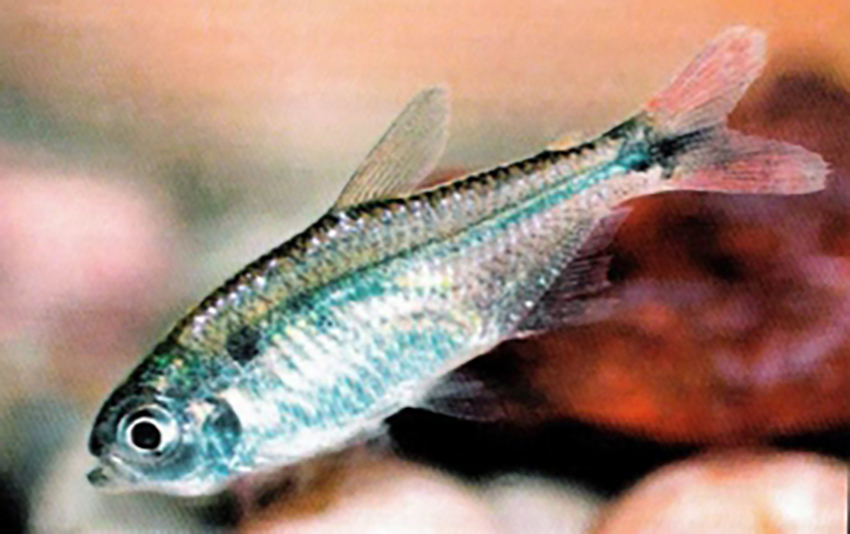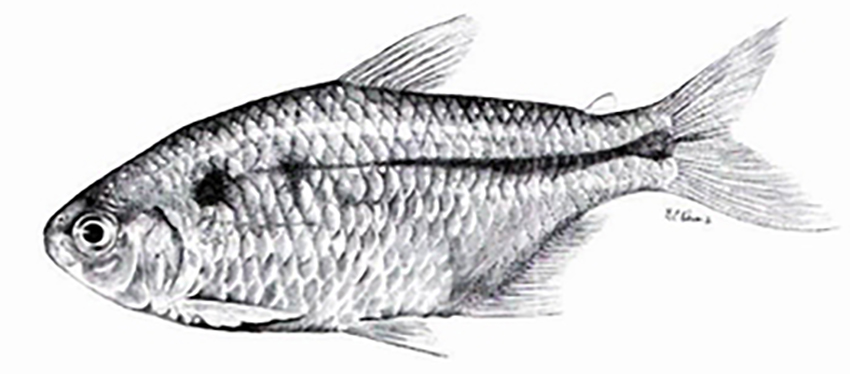new species:
Hyphessobrycon togoi Miquelarena & López, 2006
type locality:
Argentina, province of Buenos Aires, Chascomús lagoon (35°45’S-58°30’W); Holotype: ILPLA 1704 (59,0 mm SL, female)
published in:
Miquelarena, A.M. & H.L. López (2006):
Hyphessobrycon togoi, a new species from the La Plata basin (Teleostei: Characidae) and comments about the distribution of the genus in Argentina.
Revue Suisse de Zoologie 113 (4): 817-828
abstract (from publication):
A new species of the characid genus Hyphessobrycon is described from tributaries of the Río de la Plata and the Salado river system in middle-eastern Argentina. Hyphessobrycon togoi can be distinguished from all congeners, except H. langeanii Lima & Moreira, by the presence of a well defined, round to horizontally oval humeral spot. Other diagnostic characters defining Hyphessobrycon togoi are the possession of a short expanded maxilla with one large multicuspid tooth; premaxilla with an outer row of 3 small teeth, with 5 or 6 cusps, relatively apart from each other; inner series with 5 teeth that are distally broader, with numerous cusps (6-11) and overlapping each other; iv-v, 17-20 anal-fin rays; 31-36 scales on longitudinal series. Hyphessobrycon togoi is also distinguished by the presence of bony hooks on all fins of the mature males. Considerations about the distribution of the species of genus Hyphessobrycon in Argentina are included.
geographical distribution (from publication):
Salado river system and tributaries of the Río de la Plata in the Buenos Aires province, Argentina.
habitat notes (from publication):
In Buenos Aires province Hyphessobrycon togoi is found in the Salado river and in ponds, marshes and creeks within the Salado basin. The Chascomús, Lobos and Lacombe lagoons are extensive water-bodies with abundant floating and submerged vegetation. These lakes are a portion of a lenthic environment system which is one of the most remarkable features of the wet pampa. H. togoi is not especially abundant with respect to other species occurring in these lagoons, but it is sometimes caught in canals and flooded areas near the lagoons. The Salado river crosses Buenos Aires province from the northwest to southeast, running for approximately 690 km in the Pampasia and finally draining into Bahía de Samborombón. The new species was also found in Matanza river, a highly polluted environment draining into the Río de la Plata. Some of the most densely populated areas of Argentina lies along the middle and lower sections of this river, coupled with a high and complex industrial concentration.


